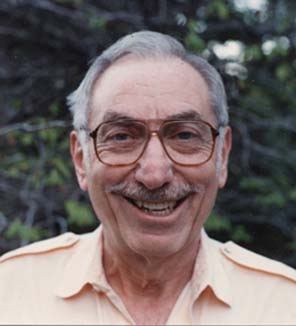

تاريخ الرياضيات

الاعداد و نظريتها

تاريخ التحليل

تار يخ الجبر

الهندسة و التبلوجي


الرياضيات في الحضارات المختلفة

العربية

اليونانية

البابلية

الصينية

المايا

المصرية

الهندية


الرياضيات المتقطعة

المنطق

اسس الرياضيات

فلسفة الرياضيات

مواضيع عامة في المنطق


الجبر

الجبر الخطي

الجبر المجرد

الجبر البولياني

مواضيع عامة في الجبر

الضبابية

نظرية المجموعات

نظرية الزمر

نظرية الحلقات والحقول

نظرية الاعداد

نظرية الفئات

حساب المتجهات

المتتاليات-المتسلسلات

المصفوفات و نظريتها

المثلثات


الهندسة

الهندسة المستوية

الهندسة غير المستوية

مواضيع عامة في الهندسة

التفاضل و التكامل


المعادلات التفاضلية و التكاملية

معادلات تفاضلية

معادلات تكاملية

مواضيع عامة في المعادلات


التحليل

التحليل العددي

التحليل العقدي

التحليل الدالي

مواضيع عامة في التحليل

التحليل الحقيقي

التبلوجيا

نظرية الالعاب

الاحتمالات و الاحصاء

نظرية التحكم

بحوث العمليات

نظرية الكم

الشفرات

الرياضيات التطبيقية

نظريات ومبرهنات


علماء الرياضيات

500AD

500-1499

1000to1499

1500to1599

1600to1649

1650to1699

1700to1749

1750to1779

1780to1799

1800to1819

1820to1829

1830to1839

1840to1849

1850to1859

1860to1864

1865to1869

1870to1874

1875to1879

1880to1884

1885to1889

1890to1894

1895to1899

1900to1904

1905to1909

1910to1914

1915to1919

1920to1924

1925to1929

1930to1939

1940to the present

علماء الرياضيات

الرياضيات في العلوم الاخرى

بحوث و اطاريح جامعية

هل تعلم

طرائق التدريس

الرياضيات العامة

نظرية البيان
Edwin Henry Spanier
المؤلف:
M W Hirsch
المصدر:
Edwin Henry Spanier (1921-1996)
الجزء والصفحة:
...
17-1-2018
643
Died: 11 October 1996 in Scottsdale, Arizona, USA

Edwin Spanier attended the University of Minnesota, graduating in 1941. The Second World War meant that Spanier spent three years doing army service before studying for his doctorate. This army service was in the U.S. Signal Corps.
After his three years of army service, Spanier studied for his doctorate at the University of Michigan. Spanier's doctoral supervisor was Norman Steenrod and under his supervision Spanier wrote a thesis on algebraic topology for which he was awarded his doctorate in 1947. The following year Spanier spent as a research fellow at the Institute for Advanced Study at Princeton. Then in 1948 he was appointed to the faculty of the University of Chicago.
During the time he held a post at Chicago, Spanier spent the year 1952-53 in Paris supported by a Guggenheim Fellowship, and the year 1958-59 as a member of the Institute for Advanced Study. Then in 1959 Spanier was appointed as professor of mathematics at Berkeley. At Berkeley, Spanier built up a strong group working in geometry and topology by several appointments of topologists to the faculty of Berkeley and also by attracting many top topologists to spend periods as visitors at Berkeley.
From the time of his doctoral work until around the time of the publication of his classic teext algebraic topology in 1966, Spanier work almost exclusively on algebraic topology. His first important paper on Borsuk's cohomotopy groups was published in the Annals of Mathematics in 1949. This work gave an algebraic classification of maps from polyhedra to spheres. Chern was appointed professor of geometry at Chicago in 1949, the year following Spanier's appointment, and the two began the study of homology groups of fibre spaces with their joint paper The homology structure of sphere bundles in 1950. Spanier began joint work with Henry Whitehead and in a series of papers they introduced the method of duality in homotopy theory. The range of his work is described in [1]:-
In all, Spanier published moer than forty papers in algebraic topology, contributing to most to most of the major research areas in the field, including cohomology operations, obstruction theory, homotopy theory, imbeddability of polyhedra in Euclidean spaces, and topology of function spaces. Many of his results are now standard tools in all fields that untilize global geometrical reasoning. These include not only various subjects in pure mathematics, but also diverse areas in applied mathematics, including computer science, mathematical physics, economic models, and game theory. Interestingly, one of Spanier's theories, now called Alexander-Spanier homology, is currently being applied to analyse differential equations - a return to Poincaré's original use of algebraic topology.
We have suggested that his work on algebraic topology went on until around the time that his famous book was published in 1966. However, he began to collaborate on work on formal languages from about 1961 onwards. This work is of major importance in theoretical computer science, and also has applications in other areas such as the theory of dynamical systems.
Spanier had an outstanding reputation as a lecturer and writer, his lectures and publications being [1]:-
... characterised by unusual lucidity and precision and an even rarer naturalness and simplicity. No matter how complex the subject, at the end the reader feels the theorems are the right ones, the hypotheses natural, and the methods as simple as possible.
Spanier returned to algebraic topology for the publications in the last years of his life. In fact his final publication returned to the topic of his first, namely the axioms which Eilenberg and Steenrod proposed for homology theory.
Articles:
- M W Hirsch, Edwin Henry Spanier (1921-1996), Notices Amer. Math. Soc. 45 (6) (1998), 704-705.
http://www.ams.org/notices/199806/comm-spanier.pdf
 الاكثر قراءة في 1920to1924
الاكثر قراءة في 1920to1924
 اخر الاخبار
اخر الاخبار
اخبار العتبة العباسية المقدسة

الآخبار الصحية















 قسم الشؤون الفكرية يصدر كتاباً يوثق تاريخ السدانة في العتبة العباسية المقدسة
قسم الشؤون الفكرية يصدر كتاباً يوثق تاريخ السدانة في العتبة العباسية المقدسة "المهمة".. إصدار قصصي يوثّق القصص الفائزة في مسابقة فتوى الدفاع المقدسة للقصة القصيرة
"المهمة".. إصدار قصصي يوثّق القصص الفائزة في مسابقة فتوى الدفاع المقدسة للقصة القصيرة (نوافذ).. إصدار أدبي يوثق القصص الفائزة في مسابقة الإمام العسكري (عليه السلام)
(نوافذ).. إصدار أدبي يوثق القصص الفائزة في مسابقة الإمام العسكري (عليه السلام)


















